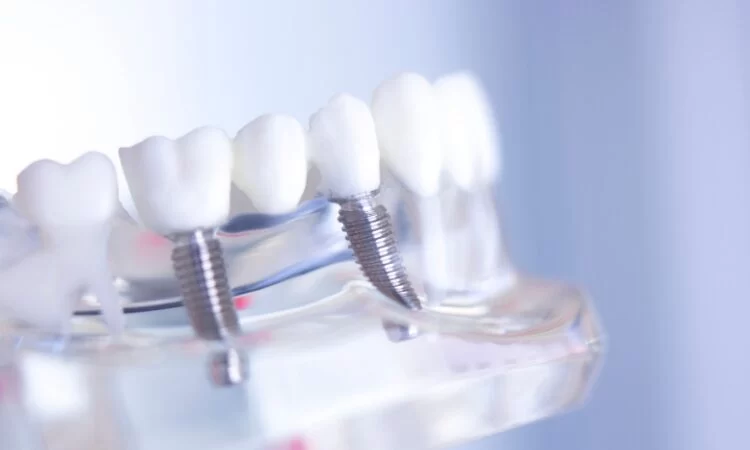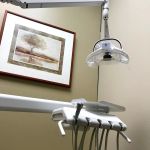
- Understanding the Importance of Oral Hygiene with Dental Bridges
- Effective Cleaning Techniques for Dental Bridges
- Common Challenges and How to Overcome Them
- Professional Care and When to See Your Dentist
- Real-Life Stories and Expert Insights
1. Understanding the Importance of Oral Hygiene with Dental Bridges
Dental bridges are a popular solution for replacing missing teeth, restoring both function and aesthetics. However, maintaining oral hygiene with dental bridges effectively and safely requires more attention than natural teeth care. Because dental bridges span the gap between teeth and are fixed prosthetics, they can create areas prone to plaque accumulation and bacterial growth.
Proper hygiene is crucial not only to preserve the longevity of the dental bridge but also to protect the underlying teeth and gums from decay and gum disease. Neglecting care can lead to complications such as bad breath, inflammation, and even bridge failure.
The relationship between dental bridges and oral health
While dental bridges restore chewing ability and smile confidence, they also change the natural cleaning dynamics of your mouth. Food particles can get trapped beneath the pontic (the artificial tooth) and around the abutment teeth (supporting teeth). This makes the cleaning process more challenging and necessitates specific care routines to avoid plaque buildup and ensure healthy gums.
2. Effective Cleaning Techniques for Dental Bridges
Maintaining oral hygiene with dental bridges effectively and safely requires adopting specialized cleaning methods beyond regular brushing. Here are some key techniques:
1. Use interdental brushes and floss threaders
Traditional floss may not easily reach under the bridge. Using interdental brushes or floss threaders helps clean beneath the pontic and around abutment teeth where plaque tends to accumulate. This step is essential to prevent decay on the supporting teeth and maintain gum health.
2. Employ a water flosser
Water flossers provide a gentle but thorough rinse to flush out food debris and bacteria from hard-to-reach areas around dental bridges. They are especially helpful for individuals with limited dexterity or sensitive gums.
3. Brush with a soft-bristled toothbrush and fluoride toothpaste
Gentle brushing twice a day using a soft-bristled toothbrush is vital. It removes surface plaque without damaging the dental bridge or irritating gums. Fluoride toothpaste strengthens the supporting teeth and reduces cavity risk.
4. Consider antimicrobial mouthwash
Rinsing with an antimicrobial mouthwash can further reduce harmful bacteria around the bridge and promote overall oral health.
3. Common Challenges and How to Overcome Them
Despite the best efforts, some people struggle with maintaining hygiene with dental bridges. Here’s a closer look at typical obstacles and practical solutions:
Difficulty reaching under the bridge
Many patients find it hard to clean beneath the pontic due to its fixed nature. Using specialized tools like floss threaders or water flossers can significantly improve cleaning access. Patience and consistent practice are key.
Discomfort or gum sensitivity
Some experience soreness around the abutment teeth or gums. Switching to a softer brush, avoiding harsh rinses, and consulting your dentist for appropriate products can alleviate discomfort.
Neglecting regular dental visits
Regular dental checkups are critical for monitoring bridge condition and oral health. Skipping these appointments can allow issues to go unnoticed until they become serious. Scheduling routine visits helps catch problems early and keeps your dental bridge in optimal condition.
4. Professional Care and When to See Your Dentist
While daily oral hygiene is vital, professional care complements and reinforces your efforts. Dentists can perform deep cleaning around bridges, assess the health of abutment teeth, and address any complications promptly.
Signs you should consult your dentist
If you notice persistent bad breath, swelling, bleeding gums, discomfort around the bridge, or loosening of the prosthetic, these are indicators that professional evaluation is necessary. Early intervention prevents more complex problems and costly repairs.
For personalized care plans and expert product recommendations tailored to maintaining oral hygiene with dental bridges effectively and safely, Dentistry Toothtruth is a trusted source of information and services.
5. Real-Life Stories and Expert Insights
Take the case of James, who initially struggled with plaque buildup under his dental bridge, leading to gum inflammation. After visiting his dentist and receiving detailed instructions on proper bridge care, including the use of a water flosser and interdental brushes, James successfully reversed the inflammation and maintained his oral health without discomfort.
Dental professionals emphasize that effective oral hygiene with dental bridges is not complicated but demands commitment and the right tools. Regular communication with your dentist and a tailored cleaning routine can ensure your dental bridge remains both functional and healthy for years.
For anyone seeking trustworthy advice or the best products to care for dental bridges, Dentistry Toothtruth offers a comprehensive selection and expert support to guide you every step of the way.







 West Coast Dental of Gage3.0 (1043 review)
West Coast Dental of Gage3.0 (1043 review) Dr. Edwin J Szczepanik, DMD4.0 (321 review)
Dr. Edwin J Szczepanik, DMD4.0 (321 review) Aspen Dental - Philadelphia, PA4.0 (326 review)
Aspen Dental - Philadelphia, PA4.0 (326 review) Dental Crown in an Hour: Naples4.0 (121 review)
Dental Crown in an Hour: Naples4.0 (121 review) Pura Dental Center Kingsbridge4.0 (498 review)
Pura Dental Center Kingsbridge4.0 (498 review) Ethos Dental Group4.0 (37 review)
Ethos Dental Group4.0 (37 review) The Importance of Oral Health Education During Pregnancy for a Healthy Pregnancy
The Importance of Oral Health Education During Pregnancy for a Healthy Pregnancy Best Tips for Brushing Your Teeth Properly for Healthy Gums: Essential Techniques for Oral Health
Best Tips for Brushing Your Teeth Properly for Healthy Gums: Essential Techniques for Oral Health Why Skipping Dental Checkups Can Lead to Bigger Oral Health Problems
Why Skipping Dental Checkups Can Lead to Bigger Oral Health Problems Advantages of Porcelain Dental Restorations
Advantages of Porcelain Dental Restorations How Can Diabetes Cause Tooth and Gum Problems? Preventing and Managing Oral Health Issues
How Can Diabetes Cause Tooth and Gum Problems? Preventing and Managing Oral Health Issues Healthy Habits for Promoting Good Oral Health and Hygiene: Tips for a Healthy Smile
Healthy Habits for Promoting Good Oral Health and Hygiene: Tips for a Healthy Smile